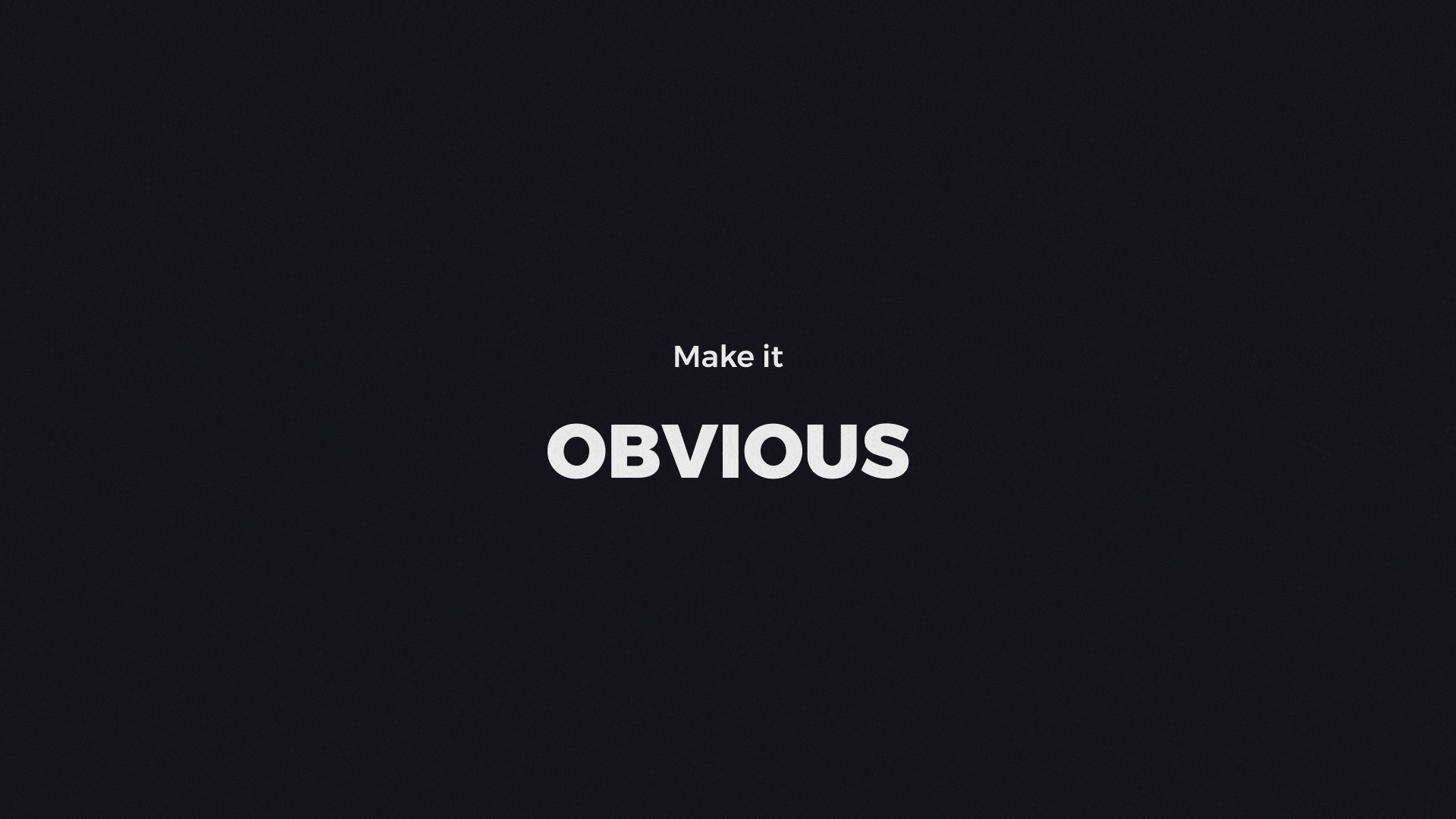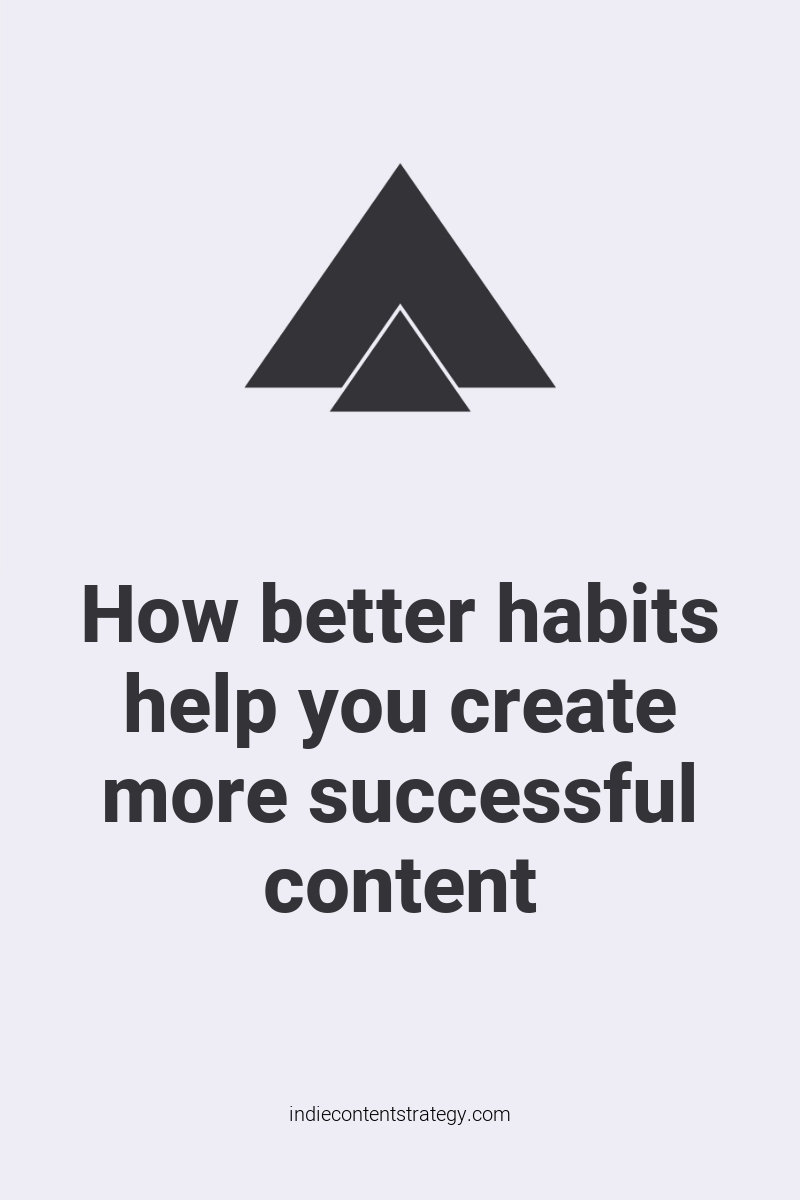Did you know that almost half of your day is directed by a bunch of habits, rather than your conscious decisions? About 45% of what you do every day is automatic behaviour – from brushing your teeth to making coffee and driving to work. Your habits also influence how you go about your (content) work.
Two books have been shaking up how I view my life and work lately: The Power of Habit by Charles Duhigg and Atomic Habits by James Clear. The first gives an in-depth insight into how habits shape us as individuals, companies and societies. The second one gives a framework to create good habits and break bad ones.
While trying to be more active in the design of my own habits and routines, I thought about how good habits can help us, as indie makers, do better (content) work. Despite so much of our day being automatic actions and reactions, we do have a lot of influence on how we shape these habits.
The good and the bad about habits
Habits are awesome! Our routines work for us. They save us the energy of making the same decisions again and again. We just repeat what has worked for us in the past. This is great when we have f.ex. established a writing habit that helps us publish articles regularly.
But it’s bad if we’re stuck in inefficient or ineffective routines that we’re not questioning any more. They’re the worst enemy of improving ourselves and our workflows. Deep down we really like things to be familiar, so we’re unlikely to suddenly give them up.
Charles Duhigg mentions that while surveys report that most men can’t stand Celine Dion songs, research by radio stations shows that they don’t switch the radio station whenever Celine Dion songs come on. Those men might think they hate Celine’s songs, but they feel comfortable with how familiar they sound, and keep listening.
Some of your content creation and -management habits are the Celine Dion songs of the content world. They suck, but they stick with you somehow and you probably don’t even know about them.
(Sorry if you actually like Celine Dion. You do you!)
How habits influence our content
To make your content more successful, there are a lot of areas you can mindfully observe to find routines to change or throw out. Habits influence our work with content on many different levels:
Writing & publishing habits
Writing habits are the first kind of routines that come to mind when we talk about content habits. There are a thousand articles and even products (like 200 Words a Day or Blurt) that aim at helping to establish a sustainable writing practice.
If you’re an indie maker and want to …
- create content to share your thoughts with the world
- reflect more and better or
- establish your personal brand or
- boost your product through content marketing
… creating a writing habit is a great idea. Writing daily, or at least regularly will make you a better writer and helps you sort your thoughts. You don’t need to publish everything, but in this case, producing quantity will boost your content quality more than trying to perfect only a few articles.
James Clear mentions an experiment by a photography professor at the University of Florida. It shows that photography students who are tasked with creating a large number of photos without caring about quality ultimately create better work than students who are tasked to create just one perfect picture.
So you might want to make it a habit to press publish after re-reading your content only once to overcome the need to make every word perfect. (like Anne-Laure does – read about how she built her writing habit!)
Safety-content vs content experiments
I publish a lot of content during my week, as we run several content-focused projects. Some types of content are super easy to create, and there is almost no uncertainty involved. I have my workflows ready and can create and publish almost without thinking about it.
Unfortunately, I realized I have developed a habit of resorting to publishing more and more of this safety-content instead of finding new approaches and creating new (maybe more effective) types of content. I’m sure I’m not alone with this.
I’m now trying to write at least one piece of content per week that scares me. One week, it was the content around a giveaway we were planning. Another week, it was a case study for our SaaS product.
You need to constantly experiment to see what works. If you break out of your safe routines, you will get more input, more ideas, more results. If you want to get to know more about why and how those experiments are important, please do read The Content Advantage by Colleen Jones (it’s one of my favourites!).
Promotion habits
You spend a lot of time writing and perfecting your content. Then – when it’s finally ready – you feel the adrenaline rush in when you press the publish button. Online. Finally. Then you send out a happy tweet and… forget that you’ve ever written that damn thing.
You probably spent some hours writing your article – why don’t you spend as much time to promote it?
I know why – or at least, I can emphasize with some reasons why:
- It feels pushy
- People didn’t scream OMG I LOVE THIS when you first posted it and now you’re doubting it’s good enough
- You concentrate on writing the next article now that this one is done
Your routine may be to share your article once or twice because you feel comfortable with that. But to reach people outside of your cozy Twitter bubble or Telegram groups you’ll have to step out of your comfort zone.
You could look into defining new routines for promotion:
- Share your articles more than once. (Use a scheduling service like Buffer to make it feel less scary and to create a schedule to re-promote older content.)
- Make a list of platforms and ways you’re going to share your article. Add new platforms like HackerNews, Indiehackers or Reddit to see how that works for you.
- Do some keyword research in advance (f.ex. with Ubersuggest by Neil Patel) to see how to write your article most SEO-friendly.
- Share your content with an email list. (If you don’t have one, add a newsletter subscription box to your blog and start growing one!)
- Create some nice assets to promote your blog – like graphics with quotes on it, or nice social share images.
- Make it a habit to thank others for sharing your post.
Operational habits
You also developed routines to manage and handle content:
- What tools do you use?
- Where do you source your material?
- Who you get feedback from?
- How do you collaborate with your teammates on content (if you have any)?
All of this and more is part of content operations, something that is always worth improving on to make your work around content more efficient.
Posting all your tweets manually and writing them up as you go will seem like an okay way to do things until you try out scheduling a whole month’s worth of them. Then doing it manually seems kind of ineffective and time-consuming (which it is).
Observe how well your operational habits are serving your productivity when producing and managing content.
Some things can only be made better if you develop solutions yourself rather than using available tools. In one of my project works for my content strategy studies I developed a concept for a review queue for madewithvuejs.com. It predicts which projects in our showcase most likely need to be updated with new infos. Now I can work off a queue of projects to check on to keep them accurate efficiently.
Use your creativity to make your life easier.
How to change your habits
I’d argue there’s a theme in the worst content habits of indie makers: Avoidance. It may be rooted in fear, self-doubt or just boredom.
The most detrimental habits in my content practice all come from not doing things rather than from doing them. So I can just recommend building your new habits by making an exact plan of things to do to improve an area of your content work. Don’t just say „I’ll promote my content more“. Define when and where and how you’re going to do it.
If you succeed in turning your plan into a routine, your feelings that cause avoidance will not get into the way as much. You won’t have to actively decide on the uncomfortable things all the time.
If you want a deep-dive into how to change up your routines, please do read James Clear’s Atomic Habits. If you’re curious, here’s a cheat sheet about the most important factors of creating good and breaking bad habits.

We’re all just acting based on a bunch of habits. Make sure you pick the right ones! It’s totally up to you, even if it doesn’t feel like that sometimes.
Read more
- Atomic Habits by James Clear
- James Clear’s blog
- The Power of Habit by Charles Duhigg
- The Content Advantage by Colleen Jones



